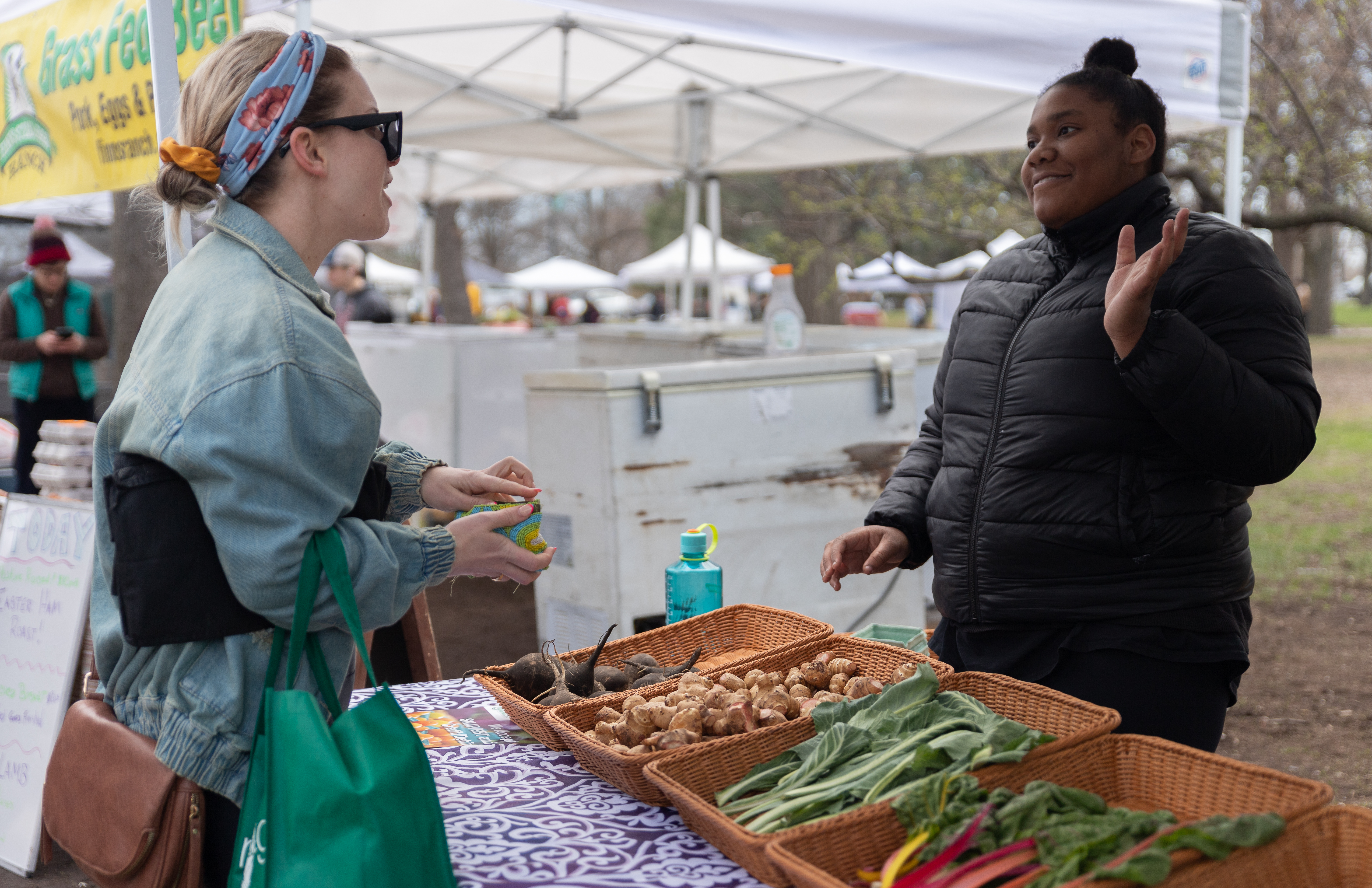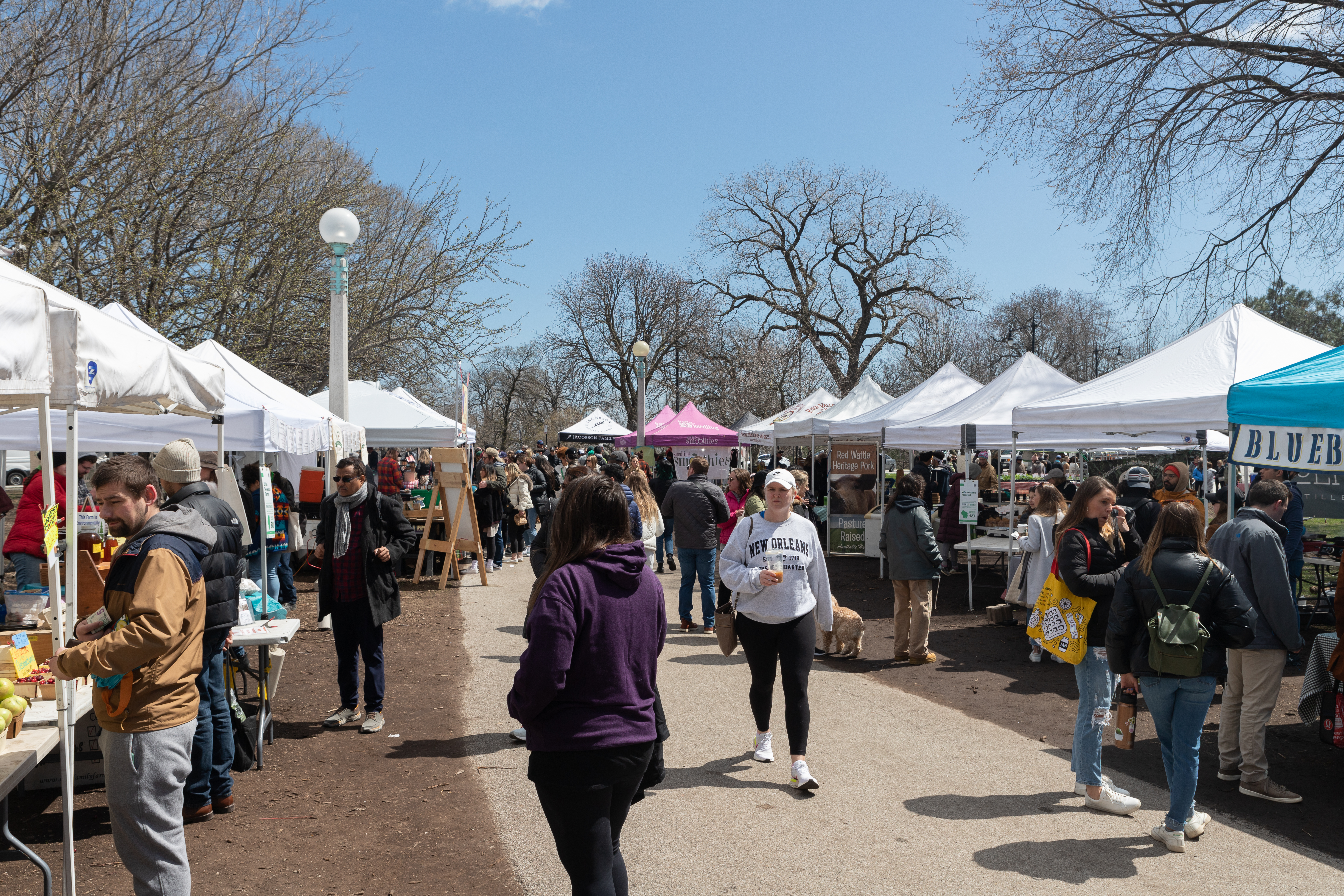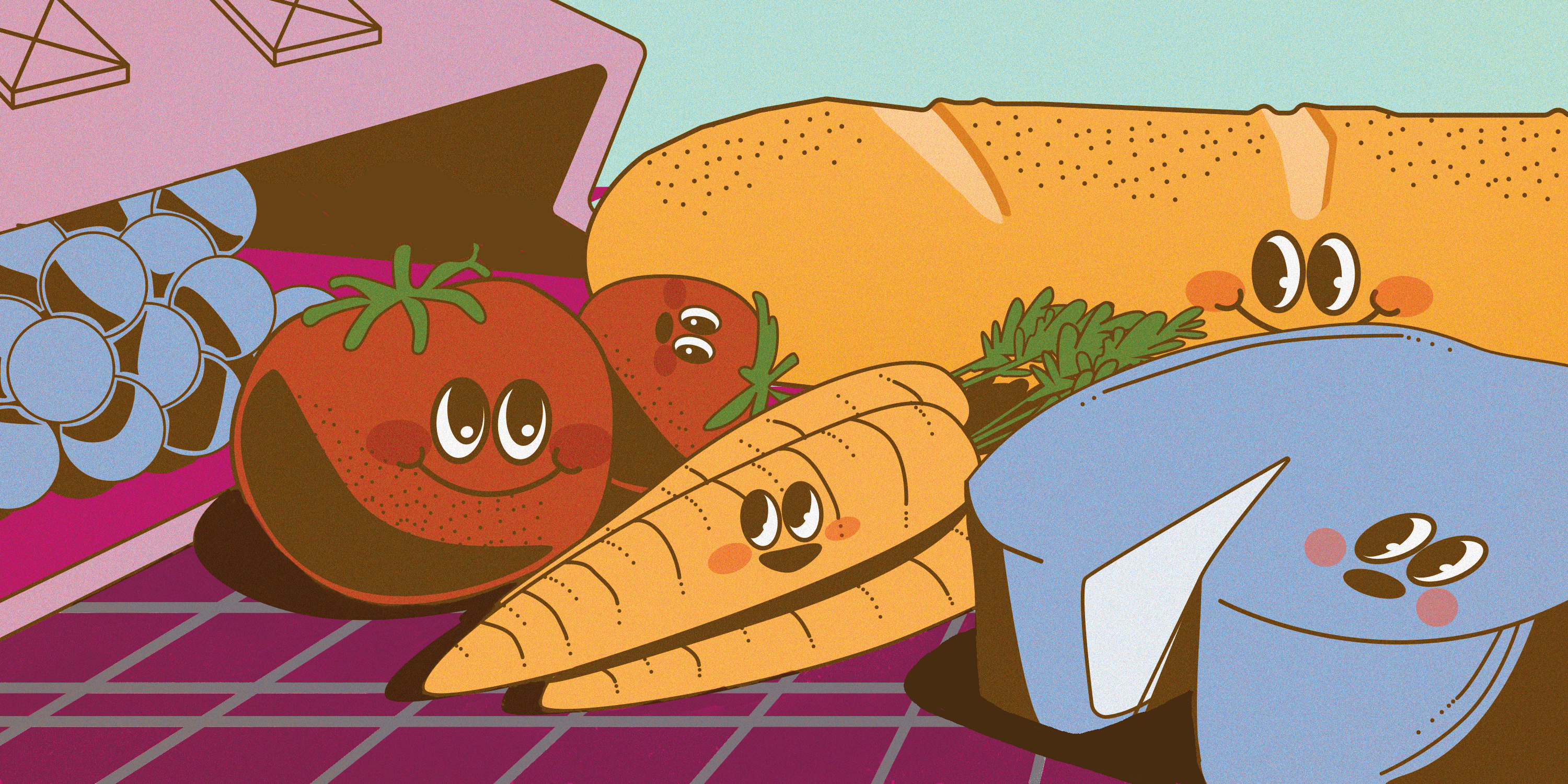“Urban farmers are essential in contributing to public health and safety and the wellness of the communities that they’re in.”
On a sunny Saturday morning, Chicagoans fill the paths of Lincoln Park between Clark Street and Stockton Drive. They pass by tables filled with produce of all kinds ─ from lettuce, carrots, eggs and cheese to mushrooms, garlic and tofu. The air is filled with the smells of fresh coffee, warm grilled cheese and freshly baked bread.
Meanwhile, Ryan Stratton stands with an inviting smile under a tent marked Star Farm Chicago. She greets everyone that approaches and even remembers many by name. She shares the vegetables that sit on her table and makes conversation about different ways to prepare them.
For those who visit the Green City Market in Lincoln Park, this might be a regular summer morning at the market.
But for Stratton, who is a market and programming associate for Star Farm Chicago, and the rest of the team at the farm, it takes a lot more work behind the scenes to bring fresh produce to the market every week.

Ryan Stratton greets a customer as they approach the Star Farm tent. Photo by Emily Soto, 14 East
Star Farm Chicago was founded six years ago, when Stephanie Dunn, its director, found a double lot for sale in Back of the Yards. It sat next to a two-flat home with burnt red bricks, the house which would soon become their office. After gaining access, Dunn and the team immediately activated the land. They planted crops — rows of fruits, vegetables and flowers quickly filled the once empty land. And along the back, a storage container was painted with large, bright yellow sunflowers to add a beautiful backdrop.
They continued to grow by coordinating programs and reaching out to the neighborhood. This led to the beginning of their first project, the Disability Farmers Program, which gives educational and employment opportunities to people with disabilities. They also hosted fun events like community barbecues.
It was this initiative of involving their neighbors that established the goals of the Star Farm. They strived to be visible and accessible to them. They aimed to promote inclusivity, sustainability and wellness, host food demos, collaborate with other organizations and attend farmer’s markets.
“It was really important that, you know, we developed Star Farm in a way that Star Farm would become a permanent asset to the community,” Dunn said.
The Impact of an Urban Farm
Back of the Yards is a community of almost 40,000 people located in Chicago’s Southwest side ─ an area also known to lack access to food. For the residents, this means the absence of grocery stores in their neighborhood, as well as a lack of affordable and healthy food options. According to research, this can lead to a host of other health-related issues such as obesity, poverty, lack of access to health care and unaffordable health insurance.
“There is nothing common about an urban farm, you know? But it is really essential that urban farms are in the city because we are close to the community,” Dunn said. “Being close to your clients is very important so you can understand their needs, understand their purchasing styles and how to best serve them.”
“We want people to eat the food that we grow, and we don’t expect them to eat something they don’t want to. We’re also able to be a good liaison for other local farmers that we work with who are maybe rural farmers outside the city and don’t have that closeness to other businesses or institutions or schools.”
Dunn added that partnerships are a key part of understanding the needs of the people. So when they had the opportunity to partner with Green City Market and Growing Home, an urban farm in Englewood, to host the Sustainable Supper, they jumped at the chance.
Sustainable Supper is a recurring event organized by Green City Market. Mandy Moody, the executive director of the market, said they invited the urban farms to discuss the unique challenges urban farmers face. Dunn added that they also used this opportunity to educate the community on sustainability and why local eating is important.
After the panel discussion which was moderated by Moody, the attendees shared a dinner prepared with food directly from the urban farms.
“They feature our produce and help us create these partnerships as well, which is really important so that people start incorporating local produce regularly into their diet and it doesn’t become, you know, something that’s exclusive ─ it’s something that’s inclusive,” Dunn said.
Farming and Advocacy
Another way that Star Farm has grown their connection with the neighborhood is through their community forums. At these meetings, they discuss policy making and advocacy. Dunn explained that while the farm advocates for policies that can contribute to their success, Star Farm believes their work should go beyond that.
“We believe that farmers, especially urban farmers, are essential in contributing to the public health and safety, and the wellness of the communities that they’re in,” Dunn said.
At these forums, community members voice their concerns about these topics ─ the most recent one taking place on April 29. Dunn said the room was filled almost entirely with women of color who participated in open discussions about health and safety. In partnership with We Will Chicago, a citywide planning initiative, Star Farm gathered this information to bring to the city of Chicago in order to help inform city planning. This is a more direct way Star Farm has invited the surrounding community to be involved with the farm’s work.
“They see what’s going on, they feel a part of what’s happening and they feel welcomed,” Dunn said.
Back to the Market
It’s about 3:45 a.m. on a Saturday and while the sun, and most of Chicago, has yet to rise, Stratton is up and gets ready for the long day ahead. After breakfast ─ a meal Stratton can’t skip on market days ─ she makes her way up to Star Farm and begins to gather everything from potatoes to carrots and, one of her top sellers, ramps. The produce is packed in a bright pink van painted with images of strawberries, cauliflower, lettuce and tomatoes. And along the side, the van reads, “Star Farm Chicago.”
The drive to Lincoln Park is not too busy at six in the morning, so after a quick ride, it’s time to set up the stand. By seven, Stratton and the rest of the vendors are ready and waiting for people to arrive.
“Then my first customer comes in and then from there it’s like, nonstop,” Stratton said. “I like talking to people about food, I ask a lot of questions to the customers like, what do they make with the things, or what are they planning to make with the food that they buy? And, yeah, it helps me get through the day.”

People walk through rows of vendors at the Green City Market in Lincoln Park. Photo by Emily Soto, 14 East
Beyond the conversations and questions, it’s a day filled with collaboration and community. The relationships between Green City, its vendors and the people support small local businesses, promote nutrition and help people know where their food comes from.
In fact, to further build a community at the market, Moody said the vendors who provide prepared food for guests source their produce from many of the other Green City vendors.
“We want to make sure that the vendors and their staff feel really supported and like they have a network behind them, a community behind them that really wants to see them be successful,” Moody said. “And so it really, it drives back to the market as a community-centric place. The fact that we’re not there just to do our shopping, just to check off like an errand from our list ─ which is how it can feel to go to the grocery store, but we’re also checking in on our family.”
At the End of the Day…
Star Farm has grown since its humble beginnings into a well-known resource to the Back of the Yards community and beyond. And it’s because the entire team at the farm contributes to their success — whether that be working in the field and feeding chickens or running programs and community outreach — everyone on the farm does it all.
“I think, if you want to work on a farm, you kind of have to have that mindset of like, you know, you’re going to be doing everything, everybody’s going to need a hand, they’re going to help you when you need help, and yeah, it’s like a very harmonious environment,” Stratton said.
With this attitude, Star Farm will continue to flourish in the future.
“I’m really looking forward to just seeing all the ways that Star Farm blossoms and collaborates with the community and producers,” Dunn said.
“But at the end of the day, you know, we’re promoting positivity, we’re promoting inclusivity, we’re promoting healthy nutrition and wellness,” Dunn said. “Also just having a safe, green space in an area that really needs those opportunities.”
Header by Helen Wargo




NO COMMENT